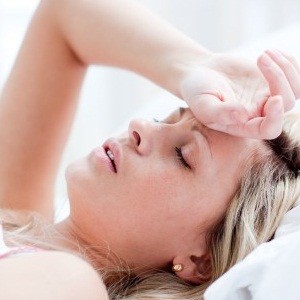Non-Hormonal Prescription Option for Hot Flashes
 Hot flashes and its nocturnal cousin, night sweats, the highly descriptive street names for the vasomotor symptoms (VMS) experienced by as many as 80% of menopausal women, are the most common of all menopausal symptoms.
Hot flashes and its nocturnal cousin, night sweats, the highly descriptive street names for the vasomotor symptoms (VMS) experienced by as many as 80% of menopausal women, are the most common of all menopausal symptoms.
No consensus exists on the pathophysiology of menopausal VMS, although many hypotheses have been proposed. Hot flashes (HFs) are hypothesized to result from a dysregulation of the hypothalamic temperature-regulating mechanisms, triggered by a decline in estrogen levels.
Alterations in neurotransmitters such as serotonin and norepinephrine (NE) are thus likely to play a crucial role in menopausal VMS. Core body temperature (CBT) is regulated between an upper threshold for sweating and a lower threshold for shivering. Between these thresholds is a “thermoneutral” zone, within which major thermoregulatory responses (sweating and shivering) do not occur. Fine thermoregulatory adjustments within the thermoneutral zone are affected by variations in peripheral blood flow. According to this theory, heat dissipation responses of HFs (sweating and peripheral vasodilation) would be triggered if CBT were elevated such that the upper threshold was crossed.
Hormone therapy (HT) has been known to be efficacious for most women with VMS due to menopause. Current clinical guidelines for HT recommend using the lowest dose for the shortest duration to relieve symptoms and reach treatment goals. Dose, route of administration, and duration of use should be tailored to the needs of each woman, and periodic reassessment of symptoms is required to evaluate whether a change of treatment is necessary. However, VMS recur in approximately half of women after discontinuation of HT. Certain health risks may preclude the use of HT in some patients, and some menopausal women with VMS who would otherwise be suitable candidates for HT prefer not to initiate or continue such treatments for a variety of reasons, including concerns about potential side effects.
When hormone therapy is not suitable or if there is an unwillingness to take HT, or if a woman simply prefers a non-hormonal therapy, the prescription medication, BRISDELLE, offers women and practitioners an FDA-approved, non-hormonal pharmacologic treatment option for moderate to severe VMS due to menopause. BRISDELLE® (paroxetine) 7.5 mg is a low-dose selective serotonin reuptake inhibitor (SSRI) shown to be efficacious in treating moderate to severe VMS associated with menopause. This dose is lower than those used in treating psychiatric disorders. BRISDELLE is not indicated for depression or any other psychiatric condition. BRISDELLE’s efficacy, safety and tolerability were demonstrated in rigorous clinical trials specifically designed to treat moderate to severe hot flashes due to menopause
The median age of natural menopause is 51.3 years. Women of this age are no longer old and could expect to live an additional active 20 – 30 – 40 years with good health habits and proper medical care. There is no need to debilitate yourself by neglecting any condition for which there are suitable therapies available.
Talk to your doctor or health care professional about your options!
Interested in women’s sexual health? Contact us for an appointment.
